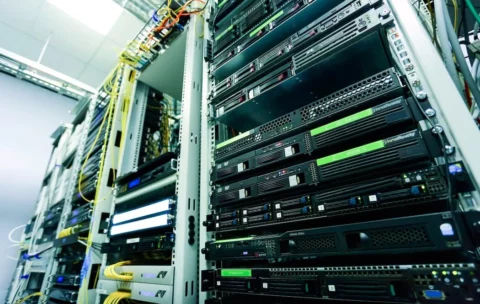Filter by Topic
Filter by Vendor
CompTIA Cloud+ eLearning Bundle
CertMaster Learn integrated with CertMaster Labs What is CertMaster Learn …
Certified Ethical Hacker | CEH eLearning
Course Description The Certified Ethical Hacker (CEH) provides an in-depth …
What you'll learn
Information security controls, laws, and standards.
Various types of footprinting, footprinting tools, and countermeasures.
Network scanning techniques and scanning countermeasures
Enumeration techniques and enumeration countermeasures
Vulnerability analysis to identify security loopholes in the target organization’s network, communication infrastructure, and end systems.
System hacking methodology, steganography, steganalysis attacks, and covering tracks to discover system and network vulnerabilities.
Different types of malware (Trojan, Virus, worms, etc.), system auditing for malware attacks, malware analysis, and countermeasures.
Packet sniffing techniques to discover network vulnerabilities and countermeasures to defend against sniffing.
Social engineering techniques and how to identify theft attacks to audit human-level vulnerabilities and social engineering countermeasures.
DoS/DDoS attack techniques and tools to audit a target and DoS/DDoS countermeasures.
Session hijacking techniques to discover network-level session management, authentication/authorization, and cryptographic weaknesses and countermeasures.
Webserver attacks and a comprehensive attack methodology to audit vulnerabilities in webserver infrastructure, and countermeasures.
Web application attacks, comprehensive web application hacking methodology to audit vulnerabilities in web applications, and countermeasures.
SQL injection attack techniques, injection detection tools to detect SQL injection attempts, and countermeasures.
Wireless encryption, wireless hacking methodology, wireless hacking tools, and Wi-Fi security tools.
Mobile platform attack vector, android vulnerability exploitations, and mobile security guidelines and tools.
Firewall, IDS and honeypot evasion techniques, evasion tools and techniques to audit a network perimeter for weaknesses, and countermeasures.
Cloud computing concepts (Container technology, serverless computing), the working of various threats and attacks, and security techniques and tools.
Penetration testing, security audit, vulnerability assessment, and penetration testing roadmap.
Threats to IoT and OT platforms and defending IoT and OT devices.
Cryptography ciphers, Public Key Infrastructure (PKI), cryptography attacks, and cryptanalysis tools.
Certified Network Defender | CND eLearning
Course Description The program prepares network administrators how to identify …
Certified Chief Information Security Officer | CCISO eLearning
Course Description CCISO Certification is an industry-leading program that recognizes …
What you'll learn
Domain 1: Governance and Risk Management
Domain 2: Information Security Controls, Compliance, and Audit Management
Domain 3: Security Program Management & Operations
Domain 4: Information Security Core Competencies
Domain 5: Strategic Planning, Finance, Procurement and Vendor Management
Understanding Cisco Cybersecurity Fundamentals (SECFND) eLearning
Course Description: The Understanding Cisco Cybersecurity Fundamentals (SECFND) course gives …
What you'll learn
Describe network operations and attacks, basic cryptography concepts, and network infrastructure device operations
Describe basic Windows and Linux OS operations, common network applications and attacks, endpoint attacks, and network and endpoint security solutions
Describe security data collection and monitoring, and the common threat models that security operations organizations can reference when performing cybersecurity analysis
Designing Cisco Data Center Infrastructure (DCID) eLearning
Course Description: The Designing Cisco Data Center Infrastructure (DCID) v7.0 …
What you'll learn
Choose the appropriate components and design a scalable, reliable, and intelligent data center
Design data center network connectivity, including Layer 2 switching and Layer 3 forwarding
Design virtual port channel (vPC), Virtual Extensible LAN (VXLAN), and Cisco Overlay Transport Virtualization (OTV) in customer scenarios
Describe management options in the LAN
Describe hardware virtualization and Fabric Extender (FEX) technologies, including data center infrastructure management and automation options
Design a data center storage network, including Redundant Array of Independent Disks (RAID) options, Hyperconvergence, Fibre Channel and Fibre Channel over Ethernet (FCoE)
Describe the Cisco UCS C-Series and B-Series servers and distinguish among system-integrated stack solutions and management options for Cisco UCS domains
Design authentication, authorization, and accounting (AAA), role-based access control (RBAC) and resource parameters for a Cisco UCS domain, including resource pools and policies
Understanding Cisco Data Center Foundations (DCFNDU) eLearning
Course Description: The Understanding Cisco Data Center Foundations (DCFNDU) v1.1 …
What you'll learn
Describe the foundations of data center networking
Describe Cisco Nexus products and explain the basic Cisco NX-OS functionalities and tools
Describe Layer 3 first-hop redundancy
Describe Cisco Fabric Extender (FEX) connectivity
Describe Ethernet port channels and virtual port channels (vPCs)
Introduce switch virtualization, machine virtualization, and describe network virtualization
Compare storage connectivity options in the data center
Describe Fibre Channel communication between the initiator server and the target storage
Describe Fibre Channel zone types and their uses
Describe N-Port Virtualization (NPV) and N-Port Identifier Virtualization (NPIV)
Describe data center Ethernet enhancements that provide a lossless fabric
Describe Fibre Channel over Ethernet (FCoE)
Describe data center server connectivity
Describe Cisco UCS Manager
Describe the purpose and advantages of APIs
Describe Cisco ACI
Describe the basic concepts of cloud computing
Introducing Automation for Cisco Solutions (CSAU) eLearning
Course Description: The Introducing Automation for Cisco Solutions (CSAU) v1.0 …
What you'll learn
Articulate the role network automation and programmability play in the context of end-to-end network management and operations
Define and differentiate between waterfall and agile software development methodologies
Interpret and troubleshoot Python scripts with fundamental programming constructs built for network automation use cases
Describe how DevOps principles, tools, and pipelines can be applied to network operations
Understand the role of network automation development environments and associated technologies such as Python virtual environments, Vagrant, and Docker
Understand and construct HTTP-based API calls to network devices
Articulate the differences among and common use cases for XML, JSON, YAML, and Protobuf
Construct and interpret Python scripts using the Python requests module to automate devices that have HTTP-based APIs
Understand the role YANG plays in network automation
Understand that a number of tools exist to simplify working with YANG models
Describe the functionality of RESTCONF and NETCONF and the differences between them
Construct Ansible playbooks to configure network devices and retrieve operational state data from them
Build Jinja2 templates and YAML data structures to generate desired state configurations










